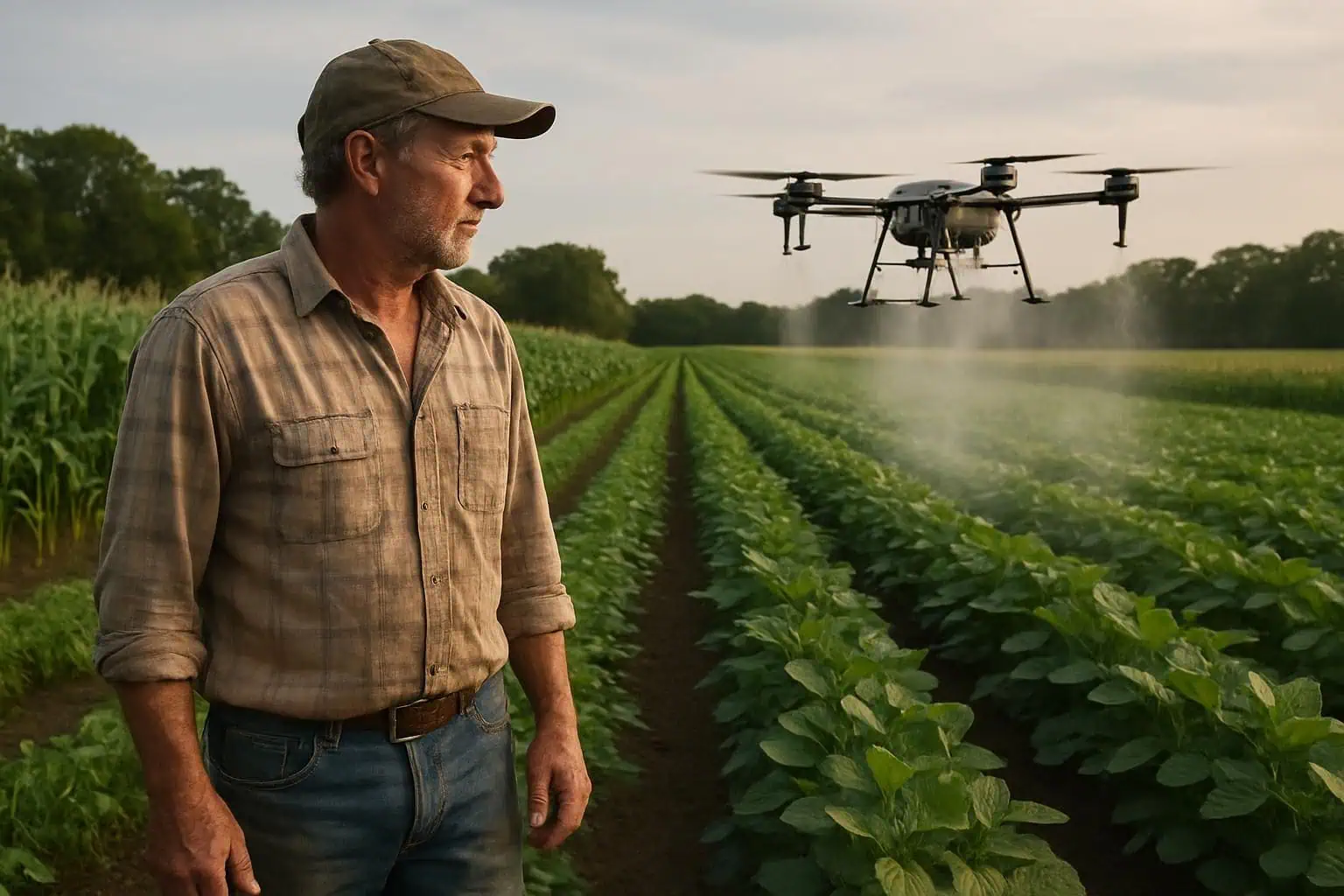Drones now carry various substances across farmland and other areas. This guide covers six unexpected materials that precision agriculture drones spray, ranging from conventional crop protection chemicals to advanced biological control agents.
Learn about the actual activities occurring in our skies.
Key Takeaways
Drones spray six main substances including pesticides, herbicides, liquid fertilizers, disinfectants, seeds, and beneficial insects for precision agriculture applications.
Agricultural drones reduce chemical waste by 30% through GPS-guided precision targeting, minimizing environmental impact and protecting water sources.
During COVID-19, drones disinfected public spaces in China, India, Spain, USA, and UAE, covering 2-kilometer areas in 10 minutes.
Modern spray drones like DJI Agras T50 carry 40kg payloads and cover 50 acres per hour for efficient farming operations.
Professional drone spraying requires pilot certificates and pesticide licenses, with most conspiracy theories about secret chemical programs lacking credible evidence.
Table of Contents
Common Substances Sprayed by Drones
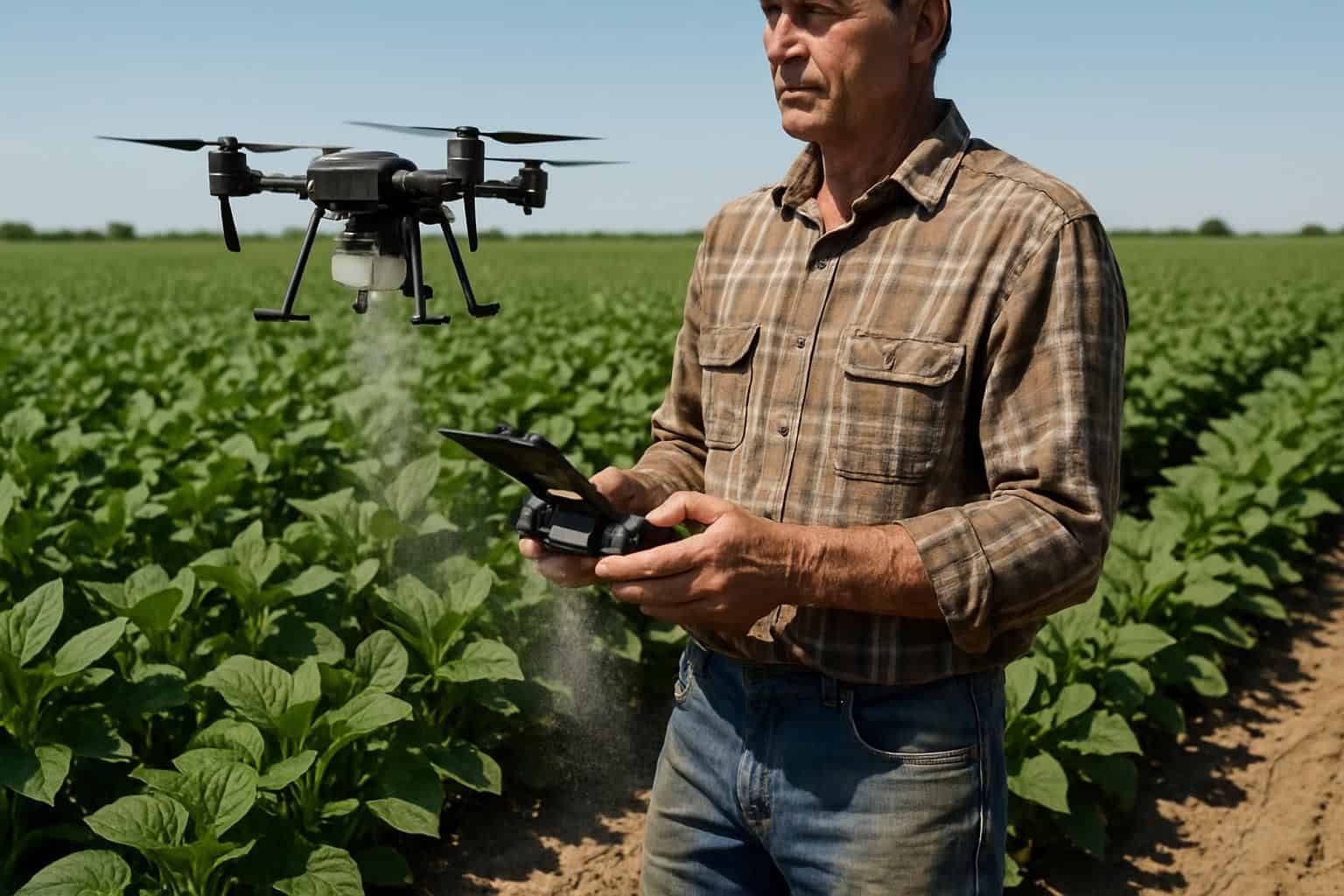
Modern drones transport a wide range of substances across agricultural fields, including chemical pesticides and advanced biological solutions. These unmanned aerial vehicles have changed how farmers apply various products, from liquid fertilizer to specialized fungicides, making precision farming more accessible to many.
What pesticides do drones usually spray?
Drones spray three main types of pesticides: insecticides, fungicides, and herbicides. Insecticides target harmful bugs that damage crops, while fungicides fight plant diseases caused by fungi.
Herbicides kill weeds that compete with crops for nutrients and water. These unmanned aircraft deliver precise amounts of chemical pesticides directly to affected areas, making crop protection more efficient than traditional methods.
Agricultural drones tailor their pesticide application to specific crops and needs. Rice fields typically receive 15 liters per hectare of treatment, while apple orchards need 20 liters per hectare for effective coverage.
Cotton, coffee, and sugarcane crops each require different pesticide formulations and application rates. The DJI Agras series and similar agricultural aircraft use hydraulic nozzles to create proper atomization, ensuring even distribution across the target area.
Precision farming with drones allows us to apply exactly what each crop needs, when it needs it, reducing waste and environmental impact while maximizing protection.
How are herbicides applied by drones?
Aerial drones use specialized spray systems to deliver herbicides directly to targeted areas. These unmanned aerial systems carry liquid herbicide solutions in onboard tanks, then release them through precision nozzles during flight.
Operators control the application rate, spray pattern, and coverage area using remote controls or pre-programmed flight paths. The Federal Aviation Administration requires proper certification for commercial herbicide applications, while the Environmental Protection Agency mandates EPA registration for all chemical products used.
Modern agricultural drones like the DJI Matrice series feature advanced atomizers that create fine droplets for better coverage and reduced drift.
Dr. Vijay Singh, a weed scientist at Virginia Tech, notes how drone technology has progressed from simple mapping and scouting to direct spraying applications. Fixed-wing and rotary aircraft both offer different advantages for herbicide application, with rotary models providing better hover capabilities for precise targeting.
Smart farming systems integrate GPS technology and environmental monitoring to optimize spray timing based on wind speed, relative humidity, and weather conditions. Various nozzle options allow operators to adjust droplet size and spray patterns for different herbicide types and target weeds.
This precision approach reduces chemical waste while improving weed control effectiveness compared to traditional agricultural methods.
The application of pesticides through unmanned aerial systems leads us to consider the various fertilizer options available for drone spraying.
What types of fertilizers are sprayed using drones?
Fertilizer spraying drones deliver three main types of nutrients to crops: nitrogen-based compounds, phosphorus solutions, and potassium mixtures. These unmanned aircraft systems use GPS and automated systems for accurate distribution across agricultural areas.
Liquid fertilizers work best for aerial application because they flow smoothly through spray nozzles and create even coverage patterns. Essential micronutrients like zinc, iron, and manganese also get applied through drone sprayers, helping plants grow stronger and produce better yields.
Multi-rotor drones handle smaller farms effectively, while fixed-wing models cover vast areas for large-scale fertilization projects. The precision application reduces waste and prevents soil compaction that heavy ground equipment typically causes.
Digital agriculture systems connect with these remotely piloted aircraft to monitor plant nutrition needs in real-time. Agriculturalists can adjust fertilizer concentrations based on soil conditions and crop requirements, making smarter farming decisions that boost crop production efficiency.
When and why do drones spray disinfectants?
Drones spray disinfectants to fight disease outbreaks and protect public health. During the COVID-19 pandemic, countries like China, India, Spain, the USA, and UAE deployed unmanned aircraft to sterilize public spaces, streets, and buildings.
These remotely operated aircraft can disinfect a 2 km radius in just 10 minutes, making them incredibly efficient for large-scale sanitization efforts. The vertical takeoff and landing (VTOL) capabilities of these UAVs allow them to reach areas that traditional ground crews cannot access safely.
Public health agencies choose drone spraying because it keeps workers safe from exposure to harmful chemicals and infectious diseases. The unmanned drone operates in unoccupied spaces, eliminating the need for human operators to wear gas masks or respirators in contaminated areas.
Pilots can control these remotely piloted vehicles from a safe distance using global positioning system technology and obstacle avoidance features. This method proves especially valuable during emergency preparedness situations where rapid response and worker safety are critical priorities.
Drone technology has revolutionized how we approach public health emergencies, allowing us to sanitize vast areas quickly while keeping our teams out of harm’s way.
Specialized Applications of Spraying Drones
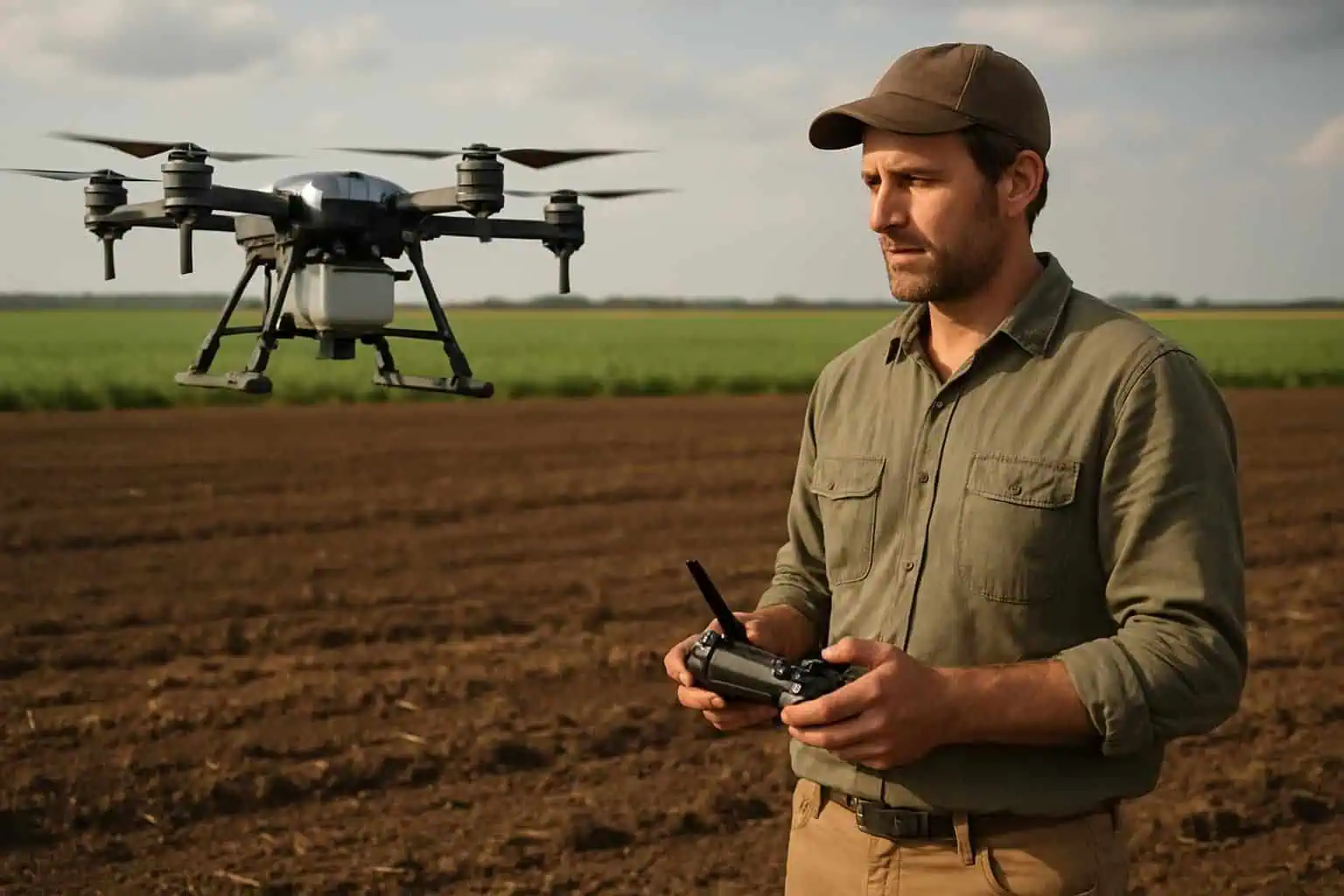
Drones push the boundaries of traditional crop dusting by tackling specialized missions that helicopters and airplanes can’t handle as efficiently — from precision aerial seeding that transforms bare soil into thriving fields, to deploying beneficial insects that act as natural pest control agents across vast agricultural landscapes.
How does aerial seeding with drones work?
Aerial seeding with drones transforms traditional planting methods through precise automation. Drones like the DJI Agras T50 carry up to 40 kg of seeds in specialized hoppers, distributing them across farmland with remarkable accuracy.
These unmanned aircraft use GPS technology and pre-programmed flight paths to ensure even seed placement across vast areas. The rotors create controlled vortices that help seeds penetrate soil surfaces, while onboard sensors monitor distribution rates in real-time.
This technology reaches difficult terrains where conventional agricultural equipment struggles, making steep slopes and muddy fields accessible for planting.
Modern seeding drones can cover 50 acres per hour, dramatically reducing the time farmers spend on planting operations. The automated seed distribution system calculates optimal spacing and depth based on crop requirements and soil conditions.
Operators control these machines from safe distances, eliminating the need for pilots to navigate challenging airspace conditions. Fast charging batteries allow multiple flights per day, while GIS technology helps map planting patterns for future crop management.
Agricultural industry experts note that drone seeding reduces labor costs while improving germination rates through consistent seed placement across fields.
Can drones spread beneficial insects effectively?
Drones release biocontrol agents like predatory mites and wasps with remarkable success. These unmanned aircraft carry specialized containers that dispense beneficial insects across crop fields.
Precision application enhances effectiveness and minimizes waste during these biological control missions. Quick coverage of large areas helps target specific pest stages before they cause major damage.
Farmers use this method to fight harmful insects without chemical pesticides.
Agricultural specialists load drones with containers full of helpful bugs. The aircraft fly over infested areas and release these natural enemies at exact locations. This targeted approach works better than traditional ground methods.
Spray drift becomes less of a concern since beneficial insects don’t spread like liquid chemicals. The process minimizes human exposure to pesticides while protecting crops naturally.
Agronomist teams often recommend this eco-friendly pest control method for sustainable farming practices.
Biological control through drone deployment represents a game-changer for integrated pest management, offering farmers a precise tool to combat agricultural pests while preserving beneficial species.
Environmental and Agricultural Benefits of Drone Spraying
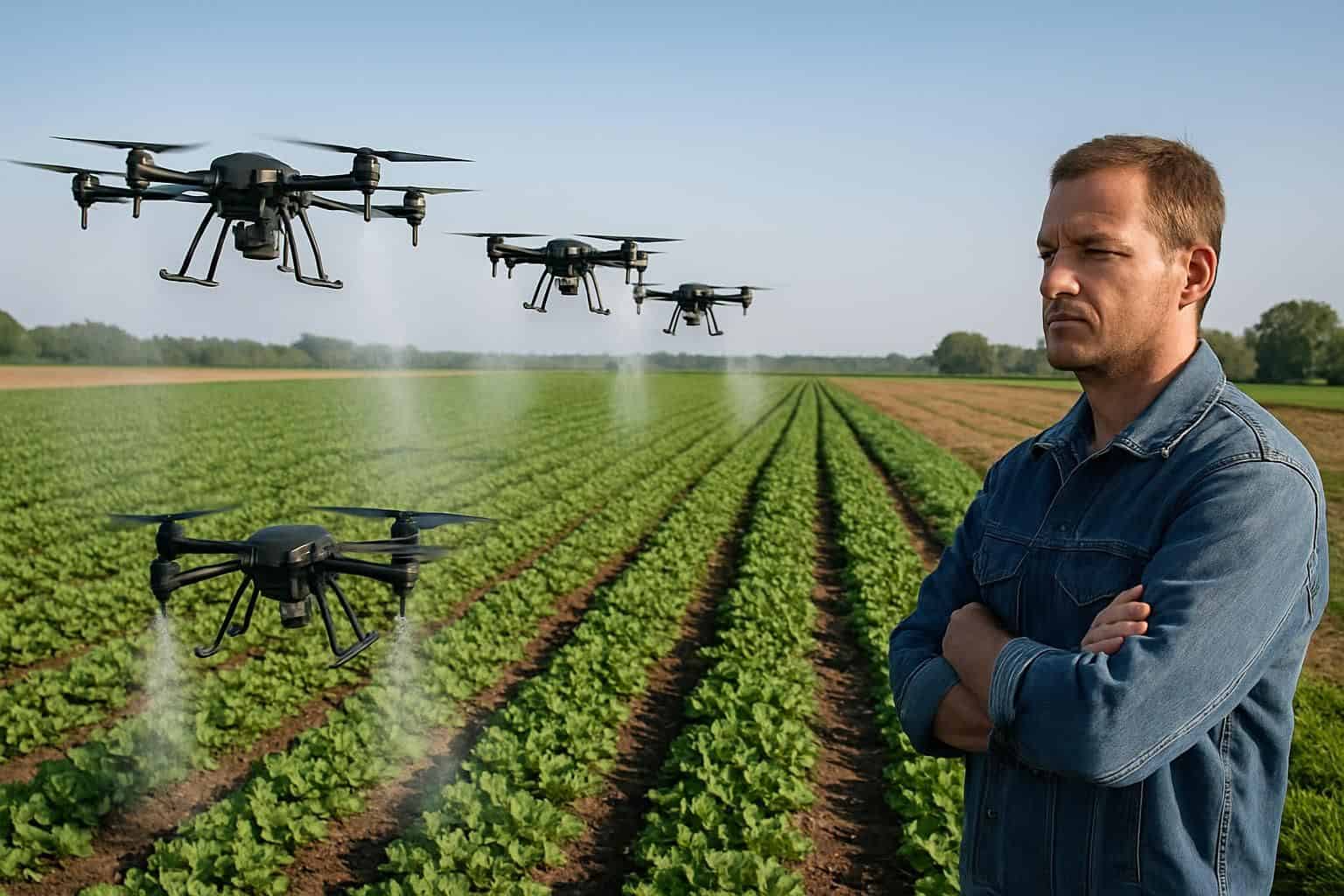
Drone spraying transforms modern agriculture by delivering precise applications that slash chemical waste, protect water sources from harmful runoff, and boost crop yields while cutting operational costs—discover how this technology reshapes farming practices and environmental stewardship.
How does drone spraying improve precision application?
GPS technology guides agricultural drones to exact locations, creating precise application patterns that traditional crop dusters cannot match. Advanced mapping software analyzes field conditions in real-time, allowing operators to adjust spray rates based on specific crop needs and soil variations.
This targeted approach reduces chemical waste by up to 30% compared to conventional spraying methods, while ensuring optimal coverage across uneven terrain.
Ultra-low volume application systems on modern drones deliver chemicals exactly where needed, minimizing drift and preventing herbicide injury to surrounding crops. Smart sensors detect wind velocity and adjust spray patterns automatically, maintaining safe speed and consistent coverage even in challenging conditions.
The technology eliminates guesswork from crop-protection decisions, giving farmers data-driven control over fertilizer and pesticide distribution across their fields.
In what ways does drone spraying reduce environmental impact?
Drone spraying cuts chemical use through precision application, targeting only areas that need treatment. Traditional crop spraying methods often oversaturate fields, wasting expensive chemicals and harming nearby ecosystems.
Drones equipped with advanced sensors can map fields and apply exact amounts of pesticides, herbicides, or fertilizers where needed. This targeted approach minimizes chemical runoff that typically flows into waterways and soil.
Farmers using unmanned helicopter systems report up to 30% less chemical usage compared to conventional ground equipment like rotary tillers and cultivators.
Environmental benefits extend beyond reduced chemical waste. Drone operations produce lower emissions compared to diesel equipment that farmers traditionally use for weed management and fungicide application.
Electric drones generate zero direct emissions during flight, while gas-powered models still consume far less fuel than tractors. The precision targeting also protects beneficial insects and soil microorganisms that conventional spraying often destroys.
Vortices generated by drone rotors help chemicals penetrate plant canopies more effectively, reducing the need for multiple applications that increase environmental exposure.
Emerging Concerns and Misconceptions
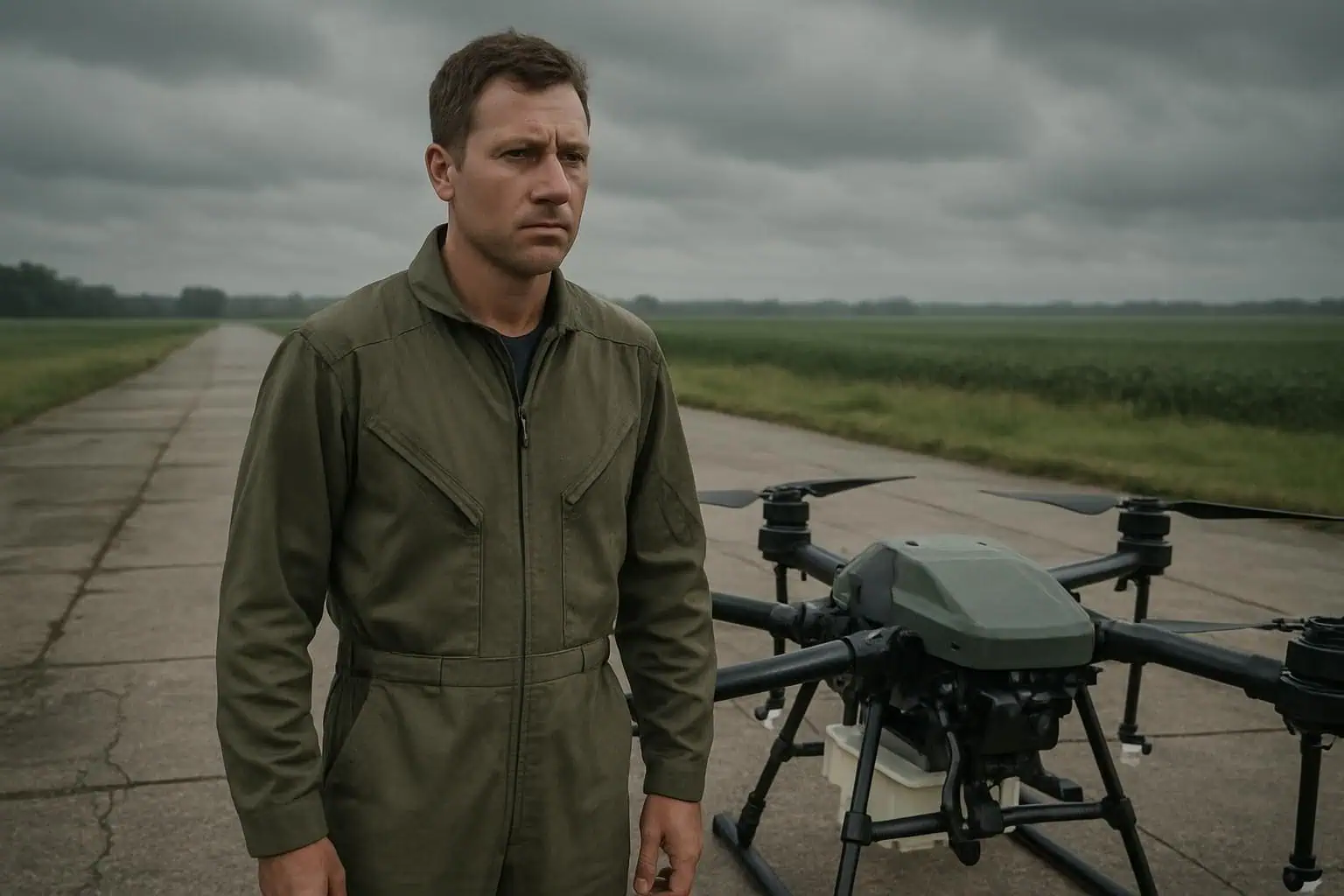
Despite growing concerns about mysterious drone activities, most commercial spraying operations involve standard agricultural chemicals and require proper pilot certificate authorization from aviation authorities near airports.
Are drones really used for chemical spraying claims?
Chemical spraying claims about drones often mix fact with fiction. Professional agricultural drones like the Agras T40 spray legitimate substances including pesticides, herbicides, and fertilizers across vast farmland.
These operations require proper pilot certificates and pesticide applicator licenses to ensure safe, legal application. Operators must follow strict regulations, especially near airports where radar systems monitor all aircraft activity.
The FMC Corporation and other agricultural companies use these drones for precision application of herbicide and other crop protection products, covering up to 350 acres per day with pressurized air systems.
Conspiracy theories about secret chemical spraying programs lack credible evidence. Real drone spraying operations maintain detailed records, like the documented 28,000 acres sprayed in 2023 by certified operators.
These missions typically occur within visual line of sight, though beyond visual line of sight operations require special authorization. Professional spray drones focus on agricultural applications, not the mysterious chemical dispersal some claim.
Public safety concerns about drone spraying lead us to examine the legitimate regulatory framework governing these operations.
What are the public safety concerns about drone spraying?
Public safety concerns about drone spraying stem from widespread misconceptions and fear of unauthorized chemical applications. Citizens worry about health risks from unknown substances being released over populated areas, though allegations of malicious chemical spraying by drones are largely unfounded.
No unusual chemical signatures have been detected in investigations of suspicious drone activities. Many people confuse legitimate agricultural operations with harmful applications, creating unnecessary panic in communities.
The DJI Mavic 3 Enterprise and similar commercial drones used for spraying follow strict FAA regulations and pesticide labeling requirements. Protective gear like gas masks may be advisable for those living near agricultural zones where legitimate spraying occurs.
Pesticide drift and environmental contamination represent real concerns that require precision in drone spraying practices. Operators must prevent chemicals from spreading beyond target areas, especially near schools, homes, and water sources.
Citizens should document and report suspicious drone activities to local authorities rather than relying on social media rumors. I’ve personally witnessed community meetings where residents expressed fears about overhead drones, only to discover they were monitoring crop health rather than spraying chemicals.
Refueling operations and herbicide resistance issues also create legitimate safety considerations for agricultural workers. Understanding proper drone regulations helps separate fact from fiction, allowing communities to address genuine safety concerns while supporting beneficial agricultural technology.
Learn how to spot drones at night to better identify aircraft in your area.
How Will Drone Spraying Practices Evolve in 2025?
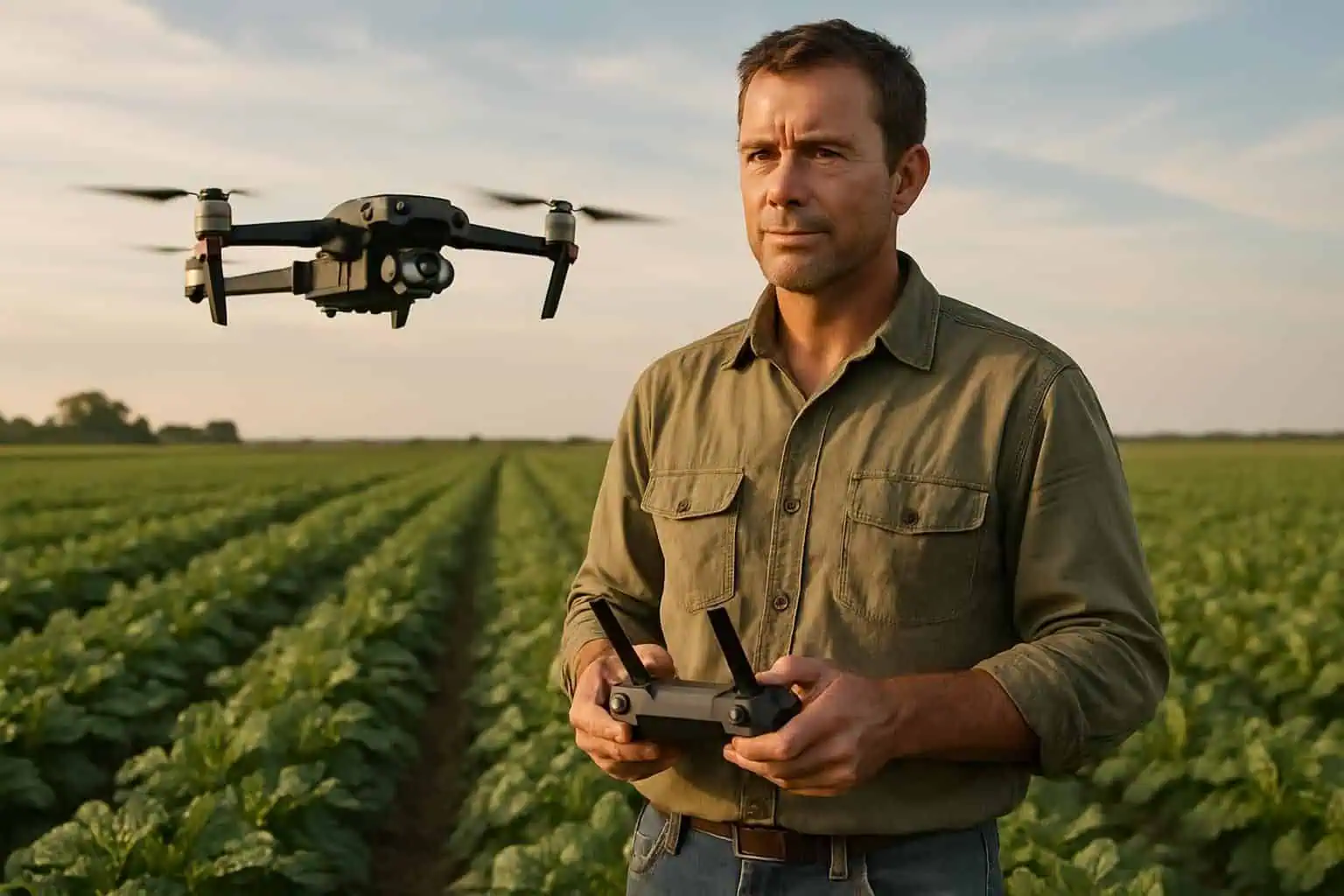
Drone spraying technology will see major upgrades in 2025, with increased payload capacities making operations more efficient across farms. Advanced sensors will work alongside terrain-following technology and RTK integration to deliver precise agrochemical applications.
Regulations may adapt to allow Beyond Visual Line of Sight (BVLOS) operations, plus swarm technologies that let multiple drones work together. These changes will expand applications beyond traditional pesticides and fertilizers to include disinfectants and aerial seeding programs.
Precision agriculture will take center stage, helping farmers minimize chemical usage while maximizing crop yields through smart targeting systems. Enhanced training programs and stricter compliance with regulatory guidelines will become necessary for safe, efficient operations.
The future of drone delivery connects to these agricultural advances, as similar navigation and payload technologies drive both sectors forward.
Operators will need better e-mail communication systems with ground crews, and some specialized applications may even involve controlled defoliants for targeted vegetation management in specific agricultural zones.
People Also Ask
What are drones spraying in agriculture?
Drones spray pesticides, fertilizers, and herbicides on crops with pinpoint accuracy. This method reduces chemical waste and protects farmworkers from harmful exposure. Modern agricultural drones can cover large fields quickly while using less product than traditional spraying methods.
Do drones spray anything for mosquito control?
Yes, drones spray insecticides and larvicides to control mosquito populations in communities. Public health departments use these aircraft to target breeding areas like wetlands and storm drains. This approach helps prevent diseases like Zika and West Nile virus.
What surprising substances do drones spray for environmental purposes?
Drones spray seeds for reforestation projects, oil dispersants during spill cleanups, and fire retardants to fight wildfires. They also release beneficial insects for pest control and spray nutrients to restore damaged ecosystems.
Are drones spraying anything for weather modification?
Drones spray silver iodide particles into clouds to encourage rainfall through cloud seeding. Some regions use this technology to increase precipitation during droughts or reduce hail damage. Weather modification drones operate at specific altitudes where temperature and humidity conditions are optimal.
References
https://www.biochemjournal.com/archives/2024/vol8issue2/PartI/9-4-72-751.pdf
https://growiwm.org/spraying-herbicides-with-drones-an-overview-from-virginia-tech/
https://enterprise-insights.dji.com/blog/spraying-drones-surprising-facts
https://www.leher.ag/blogs/fertilizer-spraying-drone-for-agriculture
https://pmc.ncbi.nlm.nih.gov/articles/PMC9612140/
https://www.dslrpros.com/blogs/drone-trends/6-real-world-applications-of-drones-in-agriculture
https://www.mdpi.com/2073-4395/13/10/2615
https://igrownews.com/agriculture-drone-spraying-benefits-best-practices/
https://greencreekdrones.com/myths-about-drones/
https://portal.cops.usdoj.gov/resourcecenter/content.ashx/cops-w0894-pub.pdf
